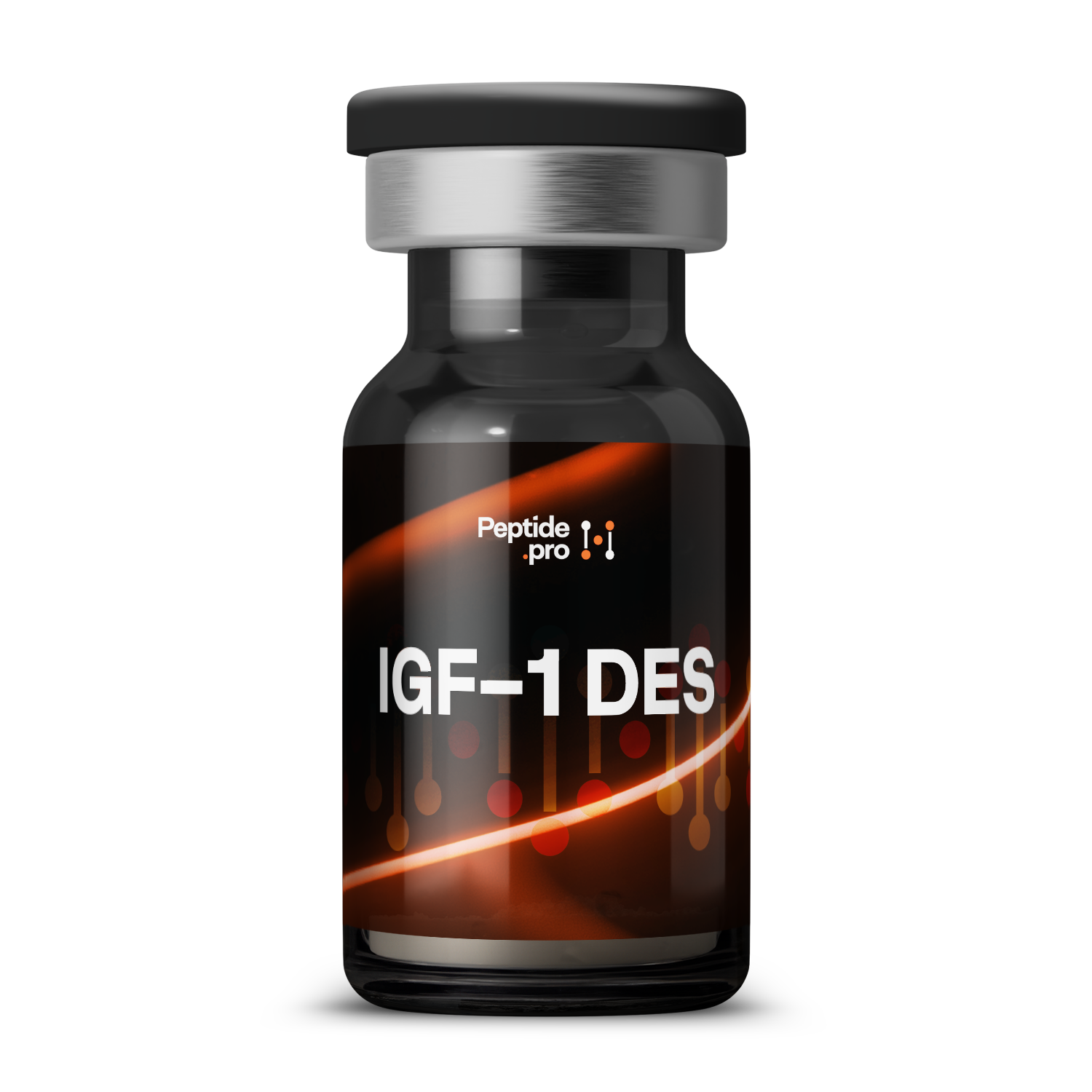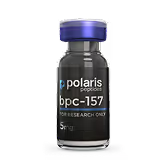Compound Overview
About the product
IGF-1 DES comprises amino acids 4–70 of native IGF-1, omitting Gly-Pro-Glu at positions 1–3 to increase receptor affinity. It retains the native disulfide bonds that stabilize its three-dimensional fold. No additional chemical modifications are present beyond the truncation. Research-grade material is produced by recombinant expression in bacterial or yeast systems and purified by high-performance liquid chromatography to ≥95 % purity, with identity confirmed by mass spectrometry.
IGF-1 DES binds the IGF-1 receptor (a cell-surface tyrosine-kinase receptor) more readily than full-length IGF-1, triggering intracellular signaling that promotes cell growth and survival. It exhibits reduced interaction with IGF-binding proteins, increasing free hormone availability. The peptide accelerates receptor-mediated activation of the PI3K/Akt pathway (a signaling cascade involved in protein synthesis). In plain terms, it more effectively “turns on” growth and repair signals in target cells.
The peptide is studied primarily for its potential to enhance tissue repair and muscle maintenance. In small human trials, IGF-1 DES accelerated healing of chronic ulcers and supported lean-body-mass preservation in catabolic conditions. Subjects tolerated short courses without severe adverse events. Investigations continue into its use for muscle-wasting diseases and wound-healing applications.
Reported adverse events include mild, transient hypoglycemia (low blood sugar) and occasional injection-site discomfort. No serious safety signals or hormonal imbalances were observed in studies up to four weeks. Data on use during pregnancy, lactation, and long-term administration are not available. Recommended monitoring includes blood-glucose levels and general metabolic panels.
IGF-1 DES is produced by recombinant DNA technology in bacterial or yeast expression systems. After fermentation, the peptide is isolated, refolded to form correct disulfide bonds, and purified by preparative HPLC to research-grade purity. Mass spectrometry and amino-acid analysis confirm sequence and integrity. Manufacturing follows good laboratory–practice standards.
IGF-1 DES is classified for investigational use only and has no approval from the U.S. FDA, EMA, or other major regulatory authorities. It cannot be prescribed or sold as a drug. Research institutions obtain it under investigational new-drug or equivalent frameworks. No commercial therapeutic or over-the-counter formulations exist.
Human studies have used 20–50 µg/kg administered subcutaneously once or twice daily for up to two weeks. Some protocols explore intravenous infusion at similar total daily doses. No standardized dosing guidelines exist outside these limited trials. All administration must follow approved research-protocol designs.
- Do restrict use to IRB-approved research studies with medical oversight.
- Do monitor blood-glucose and metabolic parameters during treatment.
- Don’t combine with other growth-factor agents without justification.
- Don’t use in pregnancy, lactation, or active malignancy
- Q: Does IGF-1 DES cause hypoglycemia?
- A: Mild hypoglycemia has been reported; monitoring is advised.
- Q: Can it be taken orally?
- A: No; only parenteral (injection or infusion) routes have been studied.
- Q: How long does its effect last?
- A: Its half-life is approximately 1–2 hours, requiring multiple daily doses.
For research use only. Not approved for medical use.


